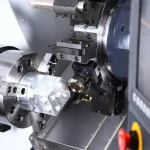Microinjection is the process of injecting a substance into cells or tissue at a microscopic level. This is often performed under an inverted microscope.
Using microinjection, you can inject DNA directly into the nucleus of a cell to modify its genetic code. This is especially useful when creating knockout animals.
What is Microinjection?
Microinjection is a technique that allows scientists to mechanically inject cells, genetic material, peptides or drugs into samples using a very fine pipette. Alternatively, material can also be removed from the sample using this method (e.g., enucleating cells).
There are a number of different chemical and physical methods for introducing DNA or other material into cells. However, among these techniques, microinjection is by far the most direct.
In the case of pronuclear microinjection, which is one of the most common uses of micro injections in research, a single cell is selected from a fertilized egg and injected with exogenous DNA that will be incorporated into its existing genome. The injected DNA is typically transferred into a female mouse that will carry and raise the genetically modified offspring. This technique is used to create many types of genetically altered animals, including mice, rats and zebrafish. For these experiments, a highly calibrated RWD microinjection system is needed, which includes a stereoscope, a microinjector, a micromanipulator and a pipette holder.
How is Microinjection Done?
The microinjection technique works by incorporating DNA directly into cells. This method is more direct than electroporation, and can be used with animal cells (eggs, oocytes, embryos) as well as plant protoplasts. It is also more efficient than other genetic transformation methods, as it increases the chance of successful integration and expression.
DNA, or deoxyribonucleic acid, is the hereditary material of organisms, and contains the information needed for cell development, growth, and reproduction. DNA can be altered and incorporated into new cells with the help of gene editing technology.
To perform microinjection, a microscope is required along with the necessary equipment to prepare the cell for the injection. A stereoscope allows the researcher to view the target cell, while a microinjector, pipette holder, and micromanipulator are also necessary. The microinjector provides precise volume through pressure pulses that can be adjusted by the researcher. The pipette holder holds the pipette, while the micromanipulator is used to position the needle near the target cell for injection.
What Equipment is Needed for Microinjection?
Microinjection is a precision task where sub-micrometer level differences can make the difference between success and failure. Consequently, using a high-quality microscope is essential. Nikon’s ECLIPSE Ti2 and ECLIPSE Ts2R series inverted microscopes and SMZ25 and SMZ18 stereo microscopes are stable, vibration-resistant systems that are ideal for microinjection work.
DNA transformation is a common use of microinjection. To achieve successful transformation, the DNA must be co-injected with a scoreable or selectable marker gene that induces a dominant phenotype. These genes are also used to rescue lethal mutations in worms.
Another common application of microinjection is the insertion of synthetic RNA into cells. This can be done using a technique called RNA interference (RNAi).
How to Inject
There are a number of chemical and physical methods for inserting DNA into cells. However, microinjection is a direct approach that ensures delivery of DNA into the cell and allows tracking of successful injection through the use of phenol red (see JoVE video). It requires meticulous alignment between the animal to be injected and the needle and reliable immobilization on the microscope slide. It also requires a precise injection volume, which can only be accomplished with capillary microneedles that are made from glass tubes using a pipette puller.
This video provides an introduction to the specialized equipment needed for microinjection and describes the process of injecting foreign DNA into early zebrafish embryos. The procedure is illustrated through the example of a study investigating the toxicity of triolein to medaka embryos, which are easy to culture and develop fast. Compared to other fish, medaka embryos contain additional oil droplets that comprise lipid reserves necessary for development and serve as an adequate model for testing environmental pollutants.




